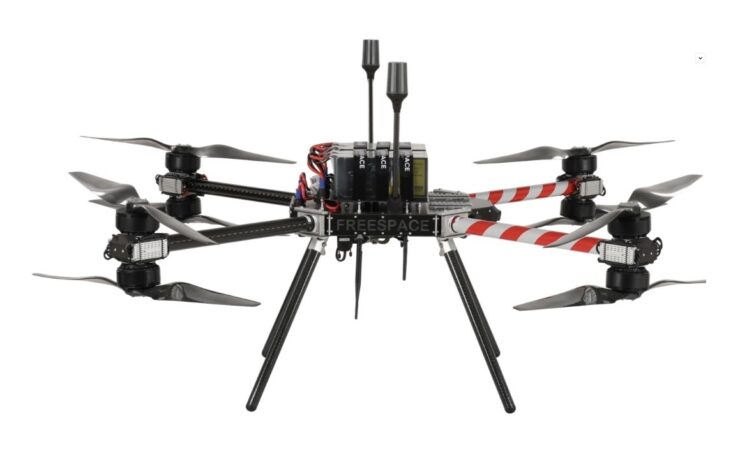
Freespace Operations, a Melbourne-based drone technology company, has quietly built itself into a heavyweight contender in the autonomous aerial logistics space. The business was co-founded by engineers Ken King and Leonard Hall in 2019, who envisioned a future where flying robots could handle transport tasks now done by trucks, helicopters, or crated airframes. Over time, Freespace shifted its focus from general-purpose robotics toward heavy-lift drones. Its mission today is to deliver modular, rugged, industrial drone systems capable of carrying significant payloads in challenging environments for defense, infrastructure, mining, and logistics users.
Heavy-Lift Platforms and Modular Design
After years of dedicated research and development, Freespace Operations now offers variations of two main platforms: the Callisto, a multirotor drone, and the Sapphire, a VTOL (Vertical Takeoff and Landing) aircraft. The Callisto line includes the Callisto 25, designed for lighter payloads in the under 25 kg class, the Callisto 50, which occupies the mid-scale heavy-lift niche, and the Callisto 75, built for even larger loads and extended operations. Each system can be tailored to specific mission needs, with Freespace providing full payload integration, operator training, and lifecycle support.
Recently, the company announced a major benchmark achieved with its Callisto 50 drone. This aircraft is designed for defense, mining, logistics, infrastructure inspection, public safety, and disaster response industries. Its design emphasizes modularity, redundancy, and ease of in-field servicing. According to Freespace’s website, the Callisto 50 can be “customized for specific missions” with interchangeable payloads and configurations. The drone uses fault-tolerant propulsion, advanced flight control avionics, and a rugged airframe suited to harsh environments. While a single Callisto 50 is not built for ultra-heavy loads, its flexible and modular design enables it to participate in cooperative missions that significantly expand its capacity.
Freespace Operations Co-Operative Drone Lift Demonstration
That potential was put to the test in a recent trial, where Freespace successfully demonstrated what it calls co-operative drone lift, two Callisto 50 drones working together to carry a single heavy payload. In the demonstration, the pair of drones balanced and transported a 100 kg load, effectively combining their power to lift four times the payload capacity of a single unit. The test proved that coordinated heavy-lift operations between multiple drones are now feasible outside a laboratory setting.

Freespace Operations Callisto 50
During the trial, the drones synchronized their flight paths and maintained load balance using dynamic adjustments to preserve stability and safety. This cooperative system allowed the aircraft to compensate for factors such as wind, shifting weight, and differential thrust. The milestone enables drones to take on missions traditionally handled by helicopters or other large, single-airframe aircraft. Freespace believes this breakthrough could revolutionize applications like transporting supplies to moving vessels, mining logistics, power line installation, and emergency supply delivery in remote regions.
“This proves it can be done safely, reliably, and at scale,” said Ken King. “We can now multiply the lifting power of a single drone up to four times while retaining all the flexibility of smaller modular systems.”
From Proof of Concept to Real Operations
For years, universities and major drone manufacturers have attempted to master coordinated lift with limited success. Freespace appears to be the first to achieve it in a commercially viable way. If the technique proves reliable, it could reduce dependence on costly rotary aircraft, shrink logistics footprints in remote or contested areas, and open new mission profiles for large-scale drone fleets. Freespace has reportedly secured a multimillion-dollar contract from an international defense customer in the Asia-Pacific region to incorporate its Freespace Operations Drone Lift technology into real-world operations. The deal underscores growing confidence that the company’s breakthrough is more than a proof of concept.
What Comes Next for Freespace Operations
Looking ahead, Freespace aims to expand cooperative lift to involve more than two drones, scale to heavier payloads, and explore combinations of different platforms. Future development will likely focus on enhancing autopilot coordination, load modeling, precision flight control, and redundancy systems to ensure field readiness. “It might seem intuitive at first, but accounting for all the different variables of flight across two or more drones is no small feat,” said Leonard Hall. “The movement of the weight, and of course the wind and weather, make it one of the most difficult challenges in drone flight. We are immensely proud to bring this capability online, a world first in our industry.”
|